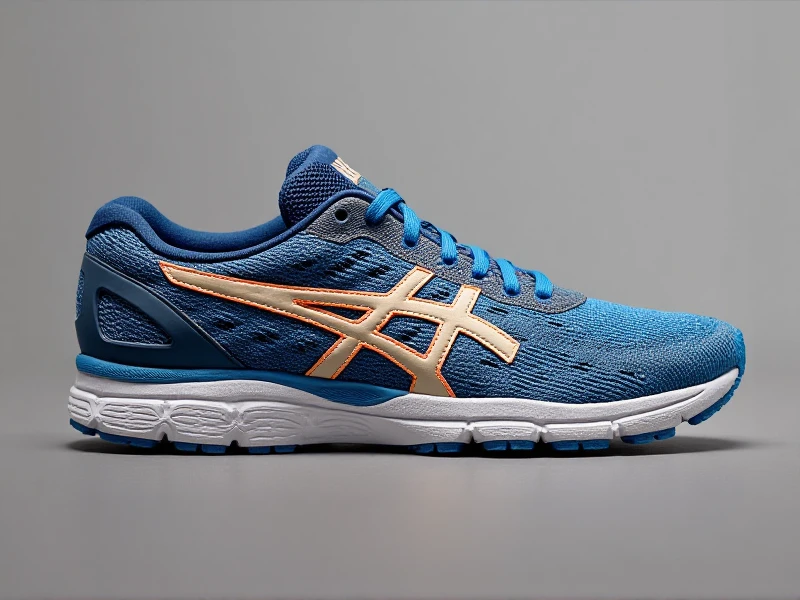9 Essential Tips for Choosing the Perfect Women's Running Shoes
2025-06-09

Finding the ideal pair of women's running shoes isn't just about style; it's the foundation for comfort, injury prevention, and peak performance on every run. With so many options crowding the market, selecting the right one can feel daunting. Whether you're a seasoned marathoner or lacing up for your first jog, here's your guide to choosing women's running shoes that truly fit your feet and your goals.
1. Know Your Foot Type (Pronation Matters): Understanding your foot's natural roll when it lands (pronation) is crucial. Do you have neutral pronation, overpronation (foot rolls inward excessively), or supination (foot rolls outward)? Visit a specialty running store for a gait analysis. Knowing this helps narrow down shoes offering the right level of stability or motion control you need. Overpronators often benefit from stability shoes, while neutral runners can choose from a wider range of cushioned neutral options.
2. Understand Your Running Style & Distance: Are you clocking high-mileage weeks training for long distances, seeking speed for shorter races, or enjoying casual runs? Women's running shoes are often categorized:
Neutral/Cushioned: For efficient runners and neutral pronators prioritizing comfort and impact absorption, especially for longer distances.
Stability: For mild to moderate overpronators, offering supportive features to control excessive inward roll without being overly rigid.
Motion Control: For severe overpronators, providing maximum support to control foot movement.
Trail: Featuring aggressive tread and protective elements for uneven, off-road terrain.
Racing/Competition: Lightweight, minimalist designs optimized for speed over durability and maximum cushioning.
3. Prioritize Fit Above All Else: Never compromise on fit! Ill-fitting women's running shoes are the quickest path to blisters, black toenails, and discomfort.
Shop in the afternoon: Feet swell throughout the day.
Wear running socks: Bring the socks you typically run in.
Thumb's width of space: Ensure there's about half an inch (a thumb's width) between your longest toe and the end of the shoe. Your toes should wiggle freely.
Heel Lock: Your heel should feel secure without slippage.
Midfoot Hug: The shoe should feel snug but not tight across the midfoot (widest part).
4. Consider the Drop (Heel-to-Toe Offset): This refers to the height difference between the heel and forefoot. Lower drop shoes (0-6mm) promote a more natural, midfoot or forefoot strike but can stress the Achilles and calves initially. Higher drops (8-12mm) are common, offering more cushioning in the heel and often feeling more familiar. Choose based on your running style and what feels comfortable. Research indicates many runners intuitively select near their habitual drop anyway.
5. Focus on Cushioning & Feel: Cushioning level is personal preference and depends on your distance and sensitivity to impact. Do you prefer a plush, soft "cloud-like" feel (like popular maximalist women's running shoes), a responsive rebound, or a firmer, more ground-connected ride? Some brands (like Nike, Brooks, New Balance, ASICS) offer specific cushioning technologies – test different levels.
6. Understand Specific Women's Designs Matter: Women's running shoes aren't just scaled-down versions of men's shoes. They're often built on a different last (foot mold), accounting for:
Narrower Heels: For a more secure fit.
Specific Instep Height & Forefoot Width: Accommodating the common shape differences in women's feet.
Softer Foams: Sometimes utilizing slightly softer foam compounds adjusted for lighter average weight.
Female-Specific Colors & Patterns: Prioritizing designs appealing to the target market.
7. Don't Be a Slave to Size: Your perfect women's running shoes might be a half or even full size larger than your everyday shoes due to natural foot expansion during running. Always rely on how the shoe feels when you stand up and jog in the store, not the number on the box. Brands also vary – fit is king.
8. Replace Shoes Timely: Running shoes have a lifespan, typically around 300-500 miles. Signs it's time for new women's running shoes include worn-out tread, compressed midsoles that feel flat and less cushioned, new aches and pains, or creasing in the foam that looks compressed. Overusing worn shoes increases injury risk.
9. Read Reviews & Trust Your Instincts: Reviews from other runners can offer valuable insights into durability, fit quirks, and performance for specific needs. However, your feet are unique. What works for one runner might not work for you. Always prioritize your own fit and comfort above star ratings.
Finding Your Perfect Match Takes Time
Investing time in choosing the right women's running shoes pays dividends in comfort, performance, and injury prevention. Visit a reputable running specialty store for expert fitting advice based on your individual needs. Try on multiple pairs from different brands (like Brooks Ghost, ASICS Gel-Nimbus, Saucony Ride, Nike Pegasus), jog around the store, and listen to your feet. Your perfect pair is out there, ready to support every mile towards your goals. Start by measuring your feet accurately and knowing your true size today.
Category: